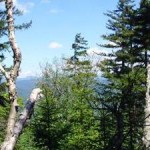Kenny said the words of America’s founding father Thomas Jefferson inspired him to take action against mountaintop removal mining. “Since Thomas Jefferson wrote ‘life, liberty and the pursuit of happiness’ just 30 miles from where I was raised a seventh generation Virginia Rock and Roll Farm Boy, it really hit home for me. These are my people and the Appalachia is where my people live. I need to do everything I can to let them know that we have better options for power in our country than any process of exhuming coal that poisons our land, our air, our water, and our children.”
“Protecting Appalachia’s natural heritage is critical in preserving both our musical legacy and the future of our craft,” said Harris. “The Appalachians have inspired countless country, folk, bluegrass, gospel and Americana songs. Now those sources of inspiration are being secretly destroyed. We’re standing together with one voice to send the message that we will not sit idly by while our mountains are being blown apart.”
The coal companies on one side and the musicians, environmental groups and affected communities are locked in a battle that is not going to end anytime soon.
But the Music Saves Mountains participants say their campaign is not an anti-coal industry movement. Rather, it seeks to raise awareness and put an end to just one destructive form of coal mining, mountaintop removal. Less than seven percent of the coal mined in the United States comes from mountaintop removal, its opponents point out.
“Nothing good comes from mountaintop removal,” said NRDC President Frances Beinecke. “It costs jobs, destroys forests and poisons drinking water. People become sick as a result of this form of mining, and communities are forever damaged.
Mountaintop removal would never be allowed in America’s other treasured mountain ranges, such as the Rockies, the Sierra Nevada or the Adirondacks. It should not be allowed in the Appalachians, and it must stop.”
Source: Environment News Service (ENS) News Release dated July 1, 2010.














